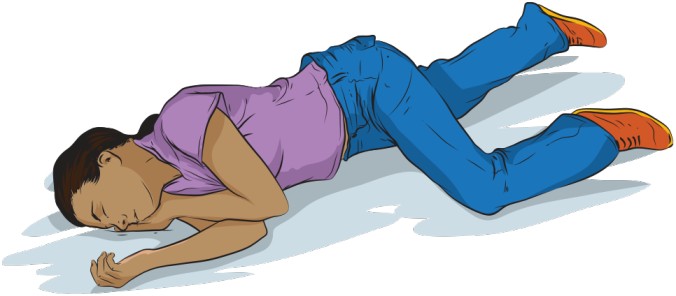In 2021, there were nearly 108,000 overdose deaths in the US. This was the highest number of overdose deaths ever recorded in the US. It was also a 15% increase from the previous year. Overdose deaths are rising at an astonishing rate. Though, they are primarily being caused by opioids, other drugs do factor in as well. If someone you know is a substance user, being aware of the symptoms of an overdose and how to respond is invaluable.
If you suspect someone is overdosing there are several things to do including checking for vitals, calling 911, administering Narcan, putting them in the recovery position, and staying with them until help arrives.
What is an Overdose?
An overdose is sometimes referred to as an OD and is caused by a toxic level of drugs within the system. The high levels of drugs overloads the body and causes adverse responses in both the body and brain. Depending on the substances, the effects of drugs can either speed up or slow down the brain’s chemical messengers. An overdose can be caused by numerous substances including alcohol, cocaine, heroin, opioids, ecstasy, antidepressants, benzodiazepines, methamphetamines, Tylenol or a combination of substances. Even doctor prescribed medications can lead to an overdose if they are misused or mixed with other substances.
Stimulant or upper drugs such as speed, cocaine, methamphetamines, or ecstasy increase heart rate, body temperature, blood pressure, and breathing. The results of this can lead to a seizure, stroke, heart attack or death.
Depressant or downer drugs such as heroin, opioids, benzodiazepines effect the body’s central nervous system. They slow and reduce breathing, body temperature, blood pressure, and heart rate. The reduction in breathing causes oxygen starvation leading to unconsciousness, coma, or death.
Who’s at Risk?
Drug users who are older have a higher chance of an overdose. As well as individuals who are long-term users. The drugs most commonly associated with overdose are opioids, cocaine, amphetamines, methamphetamine, benzodiazepines, heroin, and MDMA. Other factors that increase the risk of an overdose death include mixing drugs, higher quality, using while alone, and method of drug administration.
Drug users can reduce their risk of an overdose by:
- Using one drug at a time
- Only using with other people present
- Take less than normal with new product or sellers
- Consider how it is administered (injecting and smoking are the most potent methods)
- Be mindful of your environment and whether it’s accessible in an emergency
1 out of every 15 overdoses is fatal
80% of overdose deaths are caused by opioids
Signs of an Overdose
The signs and symptoms of an overdose vary depending on the substance used. Be aware that an opioid overdose looks very different than and ecstasy overdose. However there are several key things to look out for when identifying an overdose.
- Cold and clammy skin
- Discoloration of skin, lips, and fingers
- Pinpoint pupils
- Fever
- Convulsions
- Vomiting
- Seizures
- Slow or shallow breathing
- Making snoring or gargling noises
- Unconscious or deep sleeping
It is important to note that you never want to speculate that the individual is only asleep. Some overdose deaths happen slowly and can take several hours. Insist on waking them up and if you are unable to wake them, assume they are overdosing. Additionally, if they appear to be going in and out of consciousness or are in a state of extreme paranoia, you should assume that they are overdosing.
What to Do
An overdose is an emergency situation. Though some overdose deaths can take hours to occur, you want to respond immediately and with extreme urgency in the event of one. Death, permanent brain damage or long-term health effects are possible results of an overdose. This is why a quick and efficient response is necessary.

- Try to wake them
- Call 911
- Administer Narcan (naloxone)
- Perform CPR if unresponsive
- Second dose of Narcan if unresponsive
- Place them in the recovery position (roll them onto their left side)
- Stay with them until help arrives
Narcan or naloxone should be administered if accessible. It will not harm anyone who doesn’t need it and is the fastest response option available for an overdose. It works by blocking the effects of opioids on the brain and returns breathing back to normal. It is important to note that Narcan can wear off and the person can still overdose. Narcan only lasts for 30-90 minutes which means that the if the person does not remain supervised they may still overdose. It sometimes requires multiple doses until the opioids wear off. Narcan can be obtained at pharmacies in all 50 states without a prescription. It is available in a nasal spray or as an injectable.
What NOT to Do
Adrenaline runs high during emergency situations and sometimes people respond without enough time to process their actions. You cannot assume that you know exactly what they took or how much of it. Therefore there are several things to avoid doing if you suspect an individual is overdosing.
- Do NOT induce vomiting
- Do NOT put them in a cold bath or shower
- Do NOT allow them to sleep it off
- Do NOT try to have them walk it off
- Do NOT inject them with salt water or a stimulate drug
Lastly
An overdose situation is serious. Never allow anyone to down play how severe the consequences can be. Always seek professional help when a serious situation arises.
Recovery Coaching
Let’s make sobriety transformational
Personalized Coaching
Experience support and accountability
Inner Growth
Develop and expand your perspective on life

